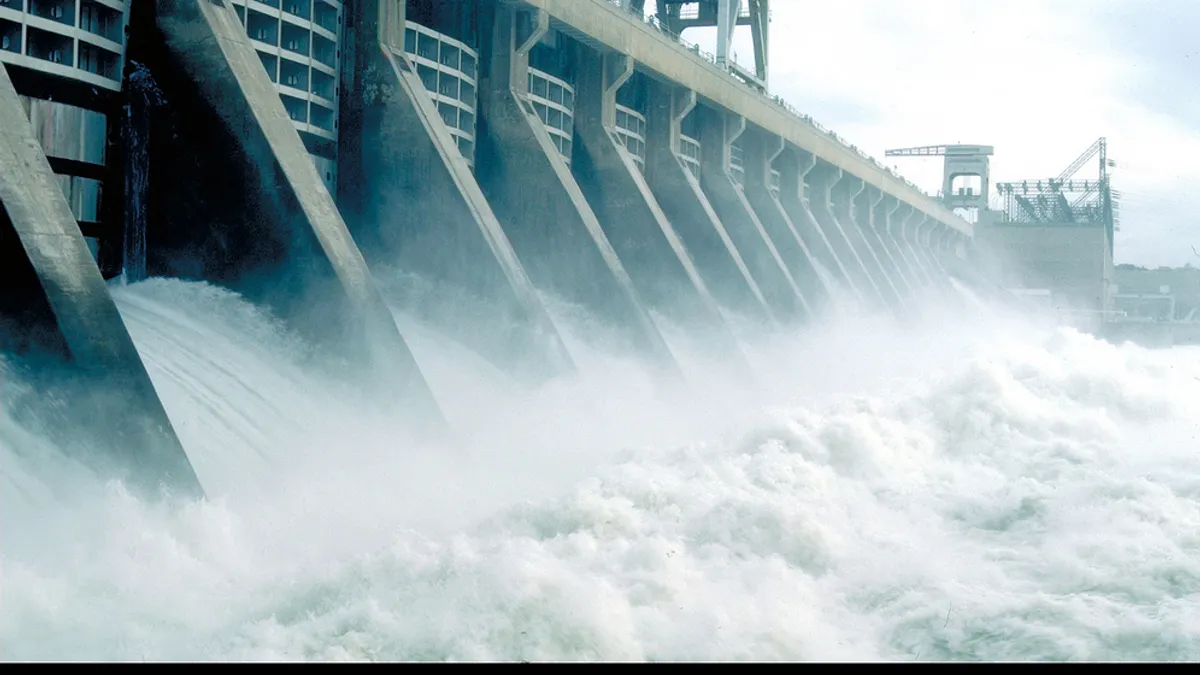Dive Brief:
- The Federal Energy Regulatory Commission (FERC) rejected a successive preliminary permit for a proposed 1,000 MW pumped storage project in Mason County, Kentucky situated on the Ohio River.
- According to FERC, the company, Maysville Pumped Storage LLC, failed to "pursue the requirements" of the first permit that the Commission issued in July 2012.
- Renewable Energy World reports that the project consisted of two alternatives that differ in size but both have an estimated average annual generation of 2,190 GWh.
Dive Insight:
FERC said that during the three year time span that Maysville Pumped Storage held the intitial permit, the company didn't file a Notice of Intent or Pre-Application Document to start the prefiling consultation or study development necessary to prepare a license application.
The company proposed two alternatives that differ in size, with one proposing an upper reservoir with a storage capacity of 9,970-acre feet and surface area of 126 acres alongside a lower-reservoir created within an excavated underground mine space with a storage capacity of 9,540 acre-feet and surface area of 212 acres. The second alternative calls for an upper reservoir with a surface area of 138 acres and storage capacity of 11,900 acre-feet and a lower reservoir also made within an excavated underground mine space. The lower reservoir would have a surface area of 266 acres and a storage capacity of 12,000 acre-feet.
Both proposals call for an intake structure on the Ohio River, a pipeline to supply water to the upper reservoirs; a roller-compacted concrete upper dam and a powerhouse/pumping station that contains four pump/generating units with a combined capacity of 1,000 MW.
The first alternative requires a a 6-mile-long, 345-kV transmission line; the second a 2.5-mile-long, 345-KV transmission line.
While battery storage is rapidly evolving into the dominant choice for energy storage, pumped storage offers bigger capacity which can be released upon need. The energy is recaptured as hydro-electric power as it cycles through the lower reservoir, essentially acting as a "giant water battery," a Duke spokesperson told Utility Dive.
But it has its limits. Mark Higgins, senior advisor to California Energy Storage Alliance (CESA), told Utility Dive that “pumped hydro's sweet spot is bulk energy shifting...But there are not many good sites left, upfront capital costs are high and policy support is limited."













